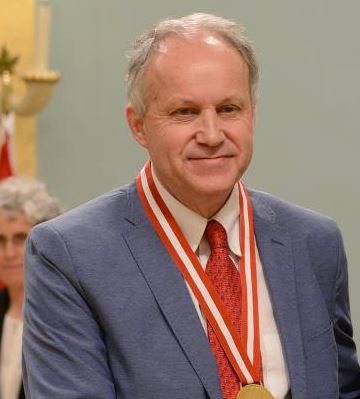The Supreme Court of Canada extended rights to Métis and non-status Indians in a landmark court case ending a 17-year court battle. The ruling now places thousands of Métis and non-status Indians under the federal government’s jurisdiction.
Professor William Wicken, from the Department of History, testified on behalf of the Congress of Aboriginal Peoples (CAP) who took the federal government to court and won. Read his statement on the final outcome of the case:
I worked on the case for four years, from 2007 to 2011. I was one of two historians who testified at trial for the Congress of Aboriginal Peoples. There were other witnesses, but mostly they were either parties to the case or testified about how status was defined. I testified in federal court for three-and-a-half days in May 2011. After that, of course, I was not part of the case. All the heavy lifting was done by the lawyers who were very tenacious and persevered in making appeals to the higher courts: Joseph Magnet at the University of Ottawa’s law faculty and Andrew Lokan who works for Toronto law firm Paliare Roland Rosenberg Rothstein LLP.
Two of us testified about history for the CAP. I testified about the British North America Act and the lead-up to it. Specifically, I talked about the broader objectives of Confederation and the broader objectives of section 91(24) in which the federal government assumed responsibility for “Indians and lands reserved for Indians.” Thus, the important issue was what did John A. Macdonald, George Etienne Cartier, George Brown, and others intend to do when they made Indians a federal responsibility as opposed to a provincial responsibility. Why didn’t they make Indians a provincial responsibility?
I also testified about where indigenous people lived at the time of and before Confederation, as well as their mixed ancestry at that point in time. Essentially many people, at least in southern Ontario, were mixed and many lived off reserve. This made the point that in 1867, Macdonald and others would have known that Indians did not just live on reserve but lived off reserve as well. And, of course, there were not reserves in Rupert’s Land at this time.
Finally, I testified, briefly about the Métis, who they were and where they lived. However, most of that evidence on the Métis was led by Gwynneth Jones who is an independent researcher who lives in Vancouver. My real purpose was about ensuring that non-status people, who had once been status, and moved to the cities, would become a federal responsibility. Or at least, the government would have to recognize this. Of course, what happens now is another question. The real issue in the case is providing services for those people who are already poor and disadvantaged and of course others who just want the government to recognize them as “Indians.”
My report, submitted to the federal court at trial, was 171 pages long. It took a bite out of my life and convinced me to do my present research on the Six Nations.
Significantly, some of the most important evidence in the case revolved around the Six Nations Grand River reserve. John A. Macdonald and Robert Baldwin, for instance, were both keenly aware of the problems that ensued as settlement increased and more and more people moved off reserve or whites moved onto reserve, married Six Nations people (or did not) and then claimed a right to live there. Much of the Indian Act, I would argue, stems from how that dynamic evolved.
– William Wicken
Read the Federal Court Reason for Judgment on the case here.

